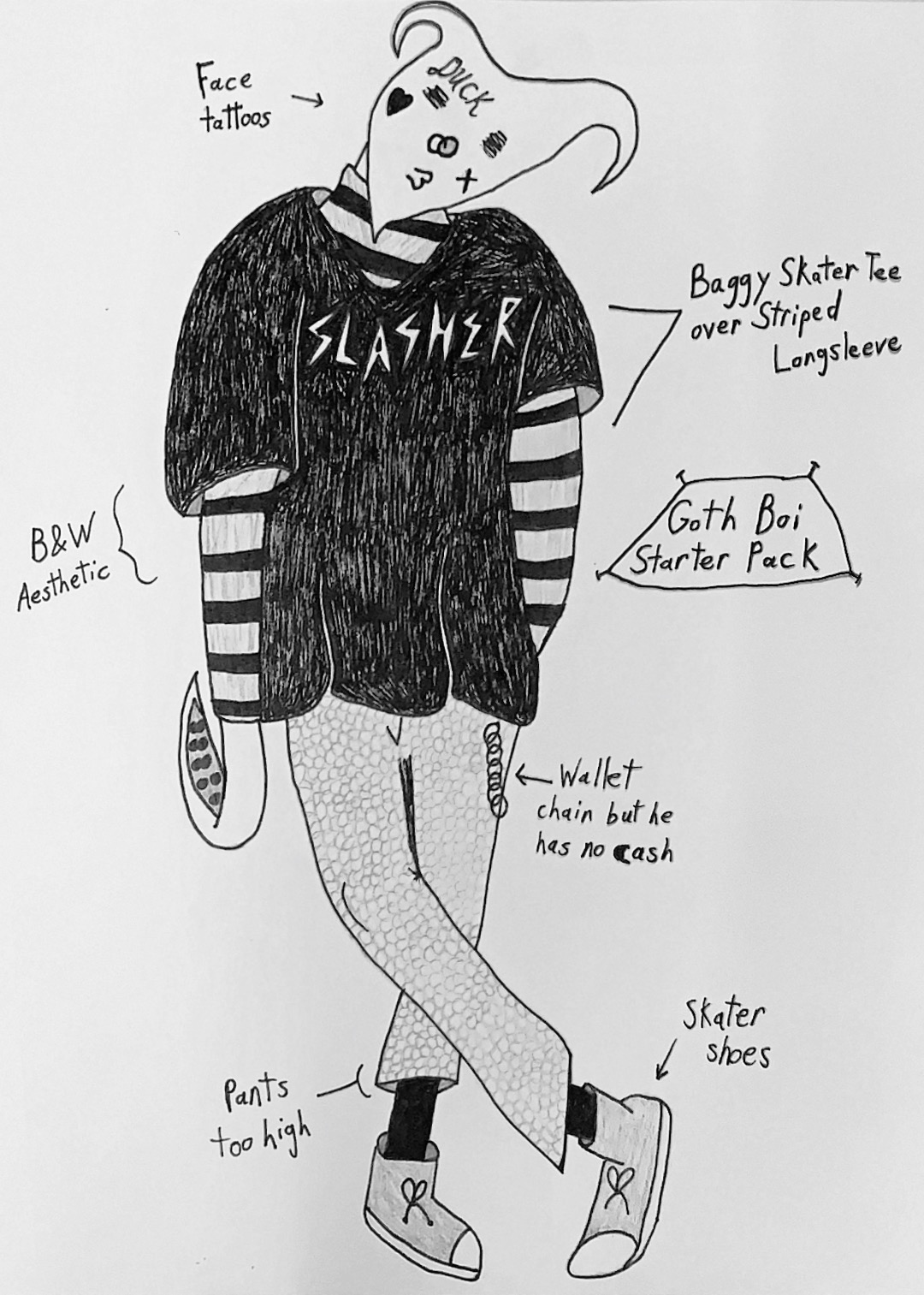A Deep Dive into Emo Hip Hop
GothBoiClique is a collective of musicians that has been releasing music since 2013.
Created by artist Wicca Phase Springs Eternal, GothBoiClique has a roster of beatmakers, rappers and singers who’ve made significant contributions to the emo-rap genre. Members include Døves, Cold Hart, Horse Head, Mackned, YAWNS, JPDREAMTHUG, Lil Tracy and Lil Peep.
Each member has their own projects, but the sound of GothBoiClique was captured well in the group’s 2016 album Yeah It’s True, which featured the drowned-out and spacey melodies common in the genre — often accompanied by acoustic samples and hard-hitting percussion. The vocal performances follow suit; they often use singing to tell the tale of their woes over trap drums. This distances them further from traditional hip hop, where the emphasis is often placed on the rapper’s lyricism and less on how the voice sounds.
The lyrical content of the genre typically features themes of drug use and wealth, but the outstanding topics of interest for these artists — especially late singer, rapper, and songwriter Lil Peep, who helped forge the genre — are usually the struggles of heartbreak and issues of mental health. The argument against this music is that these artists are promoting their lifestyle to a susceptible audience. Peep explicitly talks about how he’s used drugs as an escape from personal heartache and depression. Nowhere in his lyrics does he encourage this behavior, but some feel that these ideas have the potential to rub off on young fans.
It’s hard to say whether or not an artist should take responsibility for what they release when they know how it may be received by certain audiences. The emo-rap genre has a hold on at least some young people.
In an age where countless platforms enable expression of music and public image, not only are fanbases easily cultivated, but entire cultures devoted to and inspired by the personalities behind the work.
“People’s lives aren’t always happy so the music includes this raw reality,” said fan Darshan Snow, 17. “It’s healing. Lil Peep’s music hits the heart.”
He went on to say that it’s the outside-of-the-box artists like these that shape the culture of youth.
Despite this, some argue that there are young fans who cannot relate their experiences to the lifestyles shared by GothBoiClique members. Nonetheless, young fans try to adopt this persona and develop their identities around the music. Deviance in music taste or behavior is not unusual in teens, but there are young people who pick up the self-destructive behavior and mindsets portrayed by GothBoiClique and other artists of the genre, who purposefully mimic the activities glorified in the music.
Nevertheless, the genre continues expanding. There are many other artists of similar come-ups and sound encompassing an entire culture of “sad rap” followers and creators. Other artists of this internet-spawned craze include $UICIDEBOY$, Ghostemane, BONES, Pouya, and many others, growing in number over the past few years.
Fans might also share a taste for artists like Yung Lean and the “Sad Boys,” who are now veterans of this type of internet rap, their sound blending hip hop and vaporwave. For hardcore fans of this music, they are invested in the image of the “sad boy,” or “goth boy.” Many can relate to what the music is about already because of prior life experience, making it a helpful and positive influence. They understand the emotion and can resonate with the themes presented.
SoundCloud rapper Lil Banjo of Island Park, New York, was one of these fans. Peep and Banjo both attended Long Beach High School in Lido Beach, New York. Although Banjo did not attend the school at the same time as Peep, the artist’s presence in the community has inspired him to create music of his own.
Now he is looking to transition from making emo rap to a more old school style after speaking with rap legend Funkmaster FLEX. He plans to distinguish himself in this style and pursue the art of hip hop.
“Once I get a good enough fanbase, I’ll do my marketing strategy, and shock people by somehow doing a different style completely,” Banjo said.
Banjo said that he understands how artists in the industry gain fame today. After seeing firsthand how Peep gained traction in the emo-rap community, the Banjo plans on strategically building his career with a similar methodology.
“When Peep died, everyone started riding that wave,” Banjo said. “I started getting into his music … it sounded good so I wanted to try to do that.”
Peep’s tragic overdose and death in 2017 left national media in a frenzy. The storm of coverage made it seem like the size of his fanbase was much larger than it really was. But his fanbase expanded after his death when the rapper’s legacy truly was unveiled to the world.
For Peep fans, it was a time of heartbreak and great loss. Eli Adams, 17, attended a Lil Tracy concert after Peep’s death.
“Tracy did a song by Peep as a tribute, and he broke down on the stage,” Adams said. “When he died, his fanbase wasn’t huge, but it was full of people who genuinely cared.”
Adams said that Peep left an ever-fixed mark on many people to whom his music spoke.
“In my lifetime I haven’t really experienced a whole lot of noteworthy events,” Adams said. “I vividly remember where I was when Peep died.”
Harper Shea is a first-year Exploratory student who had their face tattoos lasered off. They can be reached at hshea@ithaca.edu.

